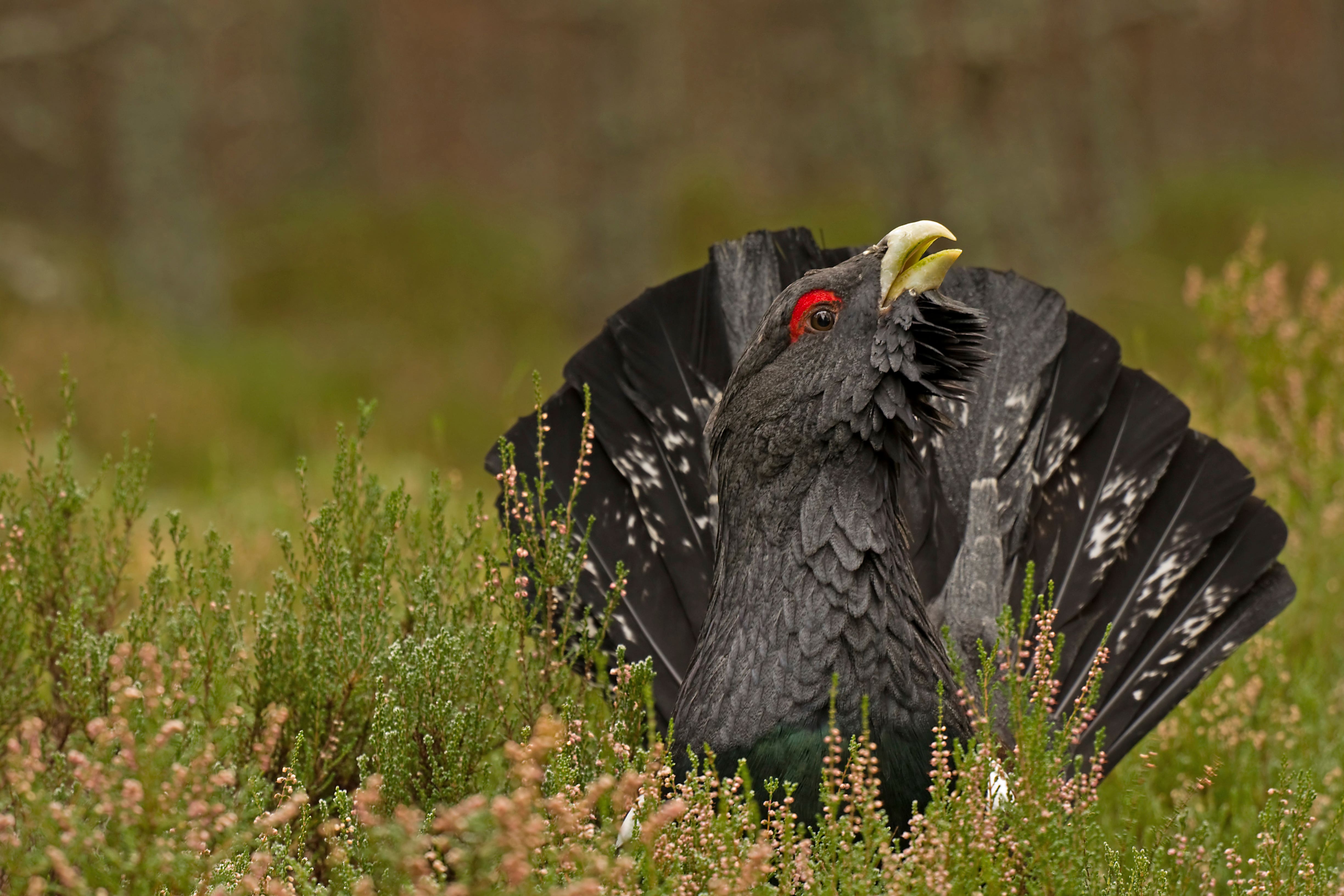Capercaillie numbers fall to critically low numbers, survey finds
It is estimated that Cairngorms National Park has 85% of the total population.

Your support helps us to tell the story
From reproductive rights to climate change to Big Tech, The Independent is on the ground when the story is developing. Whether it's investigating the financials of Elon Musk's pro-Trump PAC or producing our latest documentary, 'The A Word', which shines a light on the American women fighting for reproductive rights, we know how important it is to parse out the facts from the messaging.
At such a critical moment in US history, we need reporters on the ground. Your donation allows us to keep sending journalists to speak to both sides of the story.
The Independent is trusted by Americans across the entire political spectrum. And unlike many other quality news outlets, we choose not to lock Americans out of our reporting and analysis with paywalls. We believe quality journalism should be available to everyone, paid for by those who can afford it.
Your support makes all the difference.The capercaillie is at real risk of extinction in the UK, with only 542 of the birds estimated to be left in Scotland, according to new data.
The population has dropped around 50% since the last survey six years ago and is now at a critically low level, the latest national survey has found.
Numbers of capercaillie have been declining since the third national survey of 2003/04, however this is the first time the population has dipped below 1,000.
Conservation scientists said the decline is being fuelled by a combination of factors which reduce capercaillie survival and breeding success.
These include cold, wet spring weather which has an impact on the fitness of female birds before the breeding season and affects chick survival, along with predation and a habitat which remains fragmented in places despite ongoing work to enhance it.
Experts are calling on agencies to work together to try to help the birds.
Nick Wilkinson, conservation scientist at RSPB Scotland, said: “This up-to-date estimate of capercaillie numbers reveals just how vulnerable the population in Scotland is.
“Previous surveys have seen numbers fluctuating between around 1,000 and 2,000 birds so it’s really worrying that the results from last winter indicate there are only an estimated 542 individuals remaining now.
“These results will help focus efforts on where action should be targeted to help capercaillie by identifying their strongholds and where the most impact can be made for them.”
The country’s capercaillie population is surveyed every six years, and this – the sixth survey – was conducted over the winter of 2021/22.
The survey was funded by RSPB Scotland, NatureScot, Cairngorms National Park Authority, Cairngorms Capercaillie Project, Forestry and Land Scotland, and Scottish Forestry, with RSPB Scotland undertaking the fieldwork and scientific analysis of the results.
It comes after a study by the NatureScot Scientific Advisory Committee (SAC), published in February, warned the bird is likely to become extinct again in the UK within two to three decades if the current trend in population decline continues.
We recognise the urgency of the situation and the need to accelerate the partnership work that’s necessary to tackle threats to the species
The report said “renewed intensive measures” are needed if the population is to be conserved, focusing on options that will improve the survival of eggs and young chicks.
The UK capercaillie population is only found in Scotland, mostly in Scots pine forests that have a rich growth of blaeberry on the forest floor.
They are described as very shy and elusive birds, often perching in trees or hidden away on the forest floor.
It is estimated that Cairngorms National Park has 85% of the total population.
Andy Douse, NatureScot ornithology adviser, said: “It’s clear that the future of capercaillie in Scotland is extremely vulnerable.
“We recognise the urgency of the situation and the need to accelerate the partnership work that’s necessary to tackle threats to the species.
“This will require conservation agencies joining forces with landowners and local communities to step up action required to halt the decline, including building on the current Cairngorms Capercaillie Project, an innovative community-led capercaillie conservation project, with the Cairngorms National Park Authority.”
Survey partners will be working with the Scottish Government to develop a strategy to reverse the decline, with a particular focus on the Cairngorms National Park area.
Andy Ford, director of nature and climate change at the Cairngorms National Park Authority, said: “The results from the national survey are deeply concerning and we must all come together to decide what additional, swift actions can be implemented now to halt any further decline.”
A Scottish Government spokesman said: “The results of the latest national survey are deeply concerning, despite the efforts made to enhance capercaillie habitats.
“As work continues to support capercaillie on the ground, we will also be working with partners to develop the most appropriate approach, in light of this new data and NatureScot’s Scientific Advisory Committee review.”